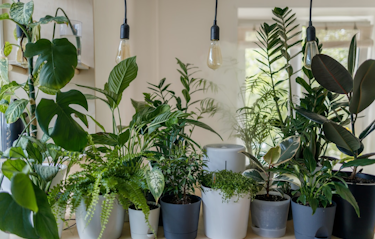
How To Trim Pothos
- Easy Care
- Araceae
- Large
- Evergreen Tropical Vines
We independently select everything we recommend. When you buy through our links, we may earn a commission.
To grow a money plant, you need a pot, well-draining soil, and a spot with indirect sunlight. Water the plant regularly and provide it with occasional fertilizer to encourage growth. With a little care and attention, your money plant will thrive and bring beauty and good fortune into your home or office.
Published on 25 August, 2023 by Oliver Rouane-Williams
Many plants go by the name of money plant. For this article, we’re talking about Pothos, also called devil’s ivy, a low-maintenance and popular houseplant that thrives in various conditions, making it an ideal choice for novice gardeners or busy individuals.
Money plants have many features that make them great choices for your home. First, they are believed to bring good luck, prosperity, and positive energy into a home or office. Additionally, money plants are excellent air purifiers, absorbing toxins and pollutants from the air. Finally, their trailing vines make the a good fit for hanging baskets or trellises.
Feng Shui enthusiasts believe the money tree brings good fortune, but any healthy and lush plant with green leaves creates a positive atmosphere.
You can definitely grow a money plant indoors! In fact, money plants are commonly grown as houseplants because they are relatively low-maintenance and adapt to various indoor conditions.
When growing a money plant indoors, choose a bright location with indirect sunlight – direct sunlight scorches the leaves. A spot near a north or east-facing window is usually ideal. Money plants also prefer well-draining soil, so use a good-quality potting soil.
To care for your indoor money plant, water it regularly, allowing the soil to dry out slightly between waterings.
Overall, growing a money plant indoors adds greenery to your home or office, and you also benefit from the plant's air-purifying properties and symbolic association with good fortune.
Money plants are generally considered to be very easy to grow.
They are low-maintenance plants that tolerate various indoor conditions, including low light and occasional neglect. Money plants are also relatively pest-resistant and are not typically affected by diseases.
Money plants are a great choice for beginners or anyone looking for a low-maintenance houseplant that brings some greenery and positive energy into their home or office.
Money plants, also known as Pothos or devil's ivy, thrive in various soils, including regular potting mix, sandy soil, or even in water.
However, the ideal medium for a money plant should be well-draining and fertile, with a pH range between 6.0 and 7.5. A mix of equal parts of perlite, peat moss, and sand is a good choice.
Repotting may be necessary when the plant outgrows its container, or the soil becomes too dry. Choose a pot with drainage holes in the bottom of the pot so the roots don’t sit in water.
As a general rule, it's recommended to water your money plant when the top inch of soil is dry to the touch.
This means checking the soil regularly and adjusting the watering schedule accordingly. Remember that overwatering causes yellow or drooping leaves and root rot.
During the growing season, typically in spring and summer, you may need to water your money plant every week, but in the winter months, it may require less frequent watering.
Money plants benefit from occasional pruning to promote healthy growth and prevent legginess.
Regular pruning also controls the plant's size and shape. You can trim back any overgrown or damaged stems with a clean and sharp pair of scissors or pruning shears.
Cut the stem just above a node, where new growth will likely emerge. Pinching back the growing tips of the stems also encourages bushier growth and new leaves. Pruning can be done any time of the year, but it's best to avoid doing it during winter when the plant is dormant.
To encourage faster growth of your money plant, ensure it has bright indirect light, water, and nutrients.
Fertilize your money plant with a balanced, water-soluble fertilizer every two to three weeks during the growing season to provide it with the necessary nutrients. Regularly prune your plant to remove dead or damaged parts and promote new growth.
Finally, propagating your money plant by taking stem cuttings also creates new plants and encourages faster growth in the parent plant.
The money plant, whose other common names are the missionary plant, Chinese money plant, devil's ivy, or Pothos, is a popular trailing vine belonging to the Araceae family. Its scientific name is Epipremnum aureum. The plant is native to Southeast Asia and is widely cultivated as an indoor plant due to its hardiness and ease of care.
The money plant has distinctive heart-shaped leaves that are variegated with yellow or white markings, and it grows up to 20 meters long if left unpruned.
In addition to golden Pothos, other types of plants called money plants include jade plant, UFO plant, pancake plant, and Pilea peperomioides are all great types of money plants to consider. The Monstera plant is a related species that also makes a great houseplant.
Common pests to watch out for include mealybugs, aphids, and spider mites, which you can treat with insecticidal soap or neem oil.
Delivered to your inbox every Saturday morning








